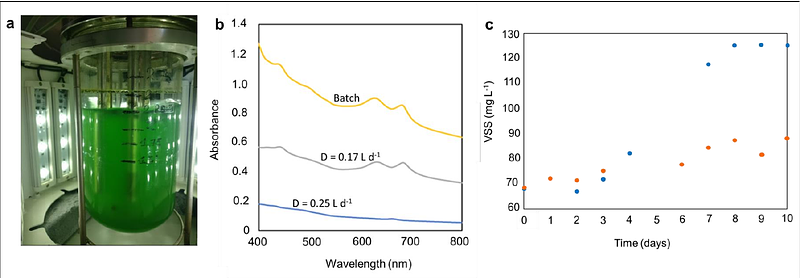Mixotrophic microalgal mixed cultures for cheese whey valorization

Mixotrophic microalgal mixed cultures for cheese whey valorization
Giulianetti de Almeida, M. P.; Mondini, C.; Bruant, G.; Tremblay, J.; Mockaitis, G.; Weissbrodt, D. G.
AbstractMicroalgae cultivation, and phycoremediation, can be a polishing step in wastewater treatment. Depending on the stream utilized for microalgal cultivation, biomass can be contaminated with considerable quantities of heavy metals and xenobiotics. Given the economic value of microalgae bioproducts, we suggest coupling anaerobic fermentation with microalgae mixotrophic growth. Cheese whey, a product from cheese production, has a 2022 forecast production of 160.7 million m3 year-1 in which about 66.5 million m3 y-1 is used as animal feed, fertilizers or illegally discharged causing eutrophication. Anaerobic fermentation of cheese whey produces volatile fatty acids (VFAs) such as acetate which serves as an organic carbon source for photoorganoheterotrophic microalgal biomass growth. Our work selected three organic sources derived from cheese whey: 40% demineralized whey powder (WPC40), lactose, and acetate. In photolitoautotrophic conditions, green phototrophic growth was successful. In batch tests, acetate was the best organic carbon source among photoorganoheterotrophs with a higher yield of 1.15 mg VSS mg Carbon-1 (C) in anaerobic conditions. Also, acetate uptake was thought to be via the glyoxylate cycle. When upscaling the experiment in a chemostat, a lower dilution rate of 0.17 d-1 was more suitable for green photoorganoheterotrophs selection, as they were not washed out in the process. These findings show that acetate uptake by microalgae in mixotrophic regimes must be better understood as well as reinforce the advantages of coupling microalgal biomass growth with cheese whey acidogenic fermentation, avoiding contaminations as in phycoremediation processes and fully valorizing cheese whey.